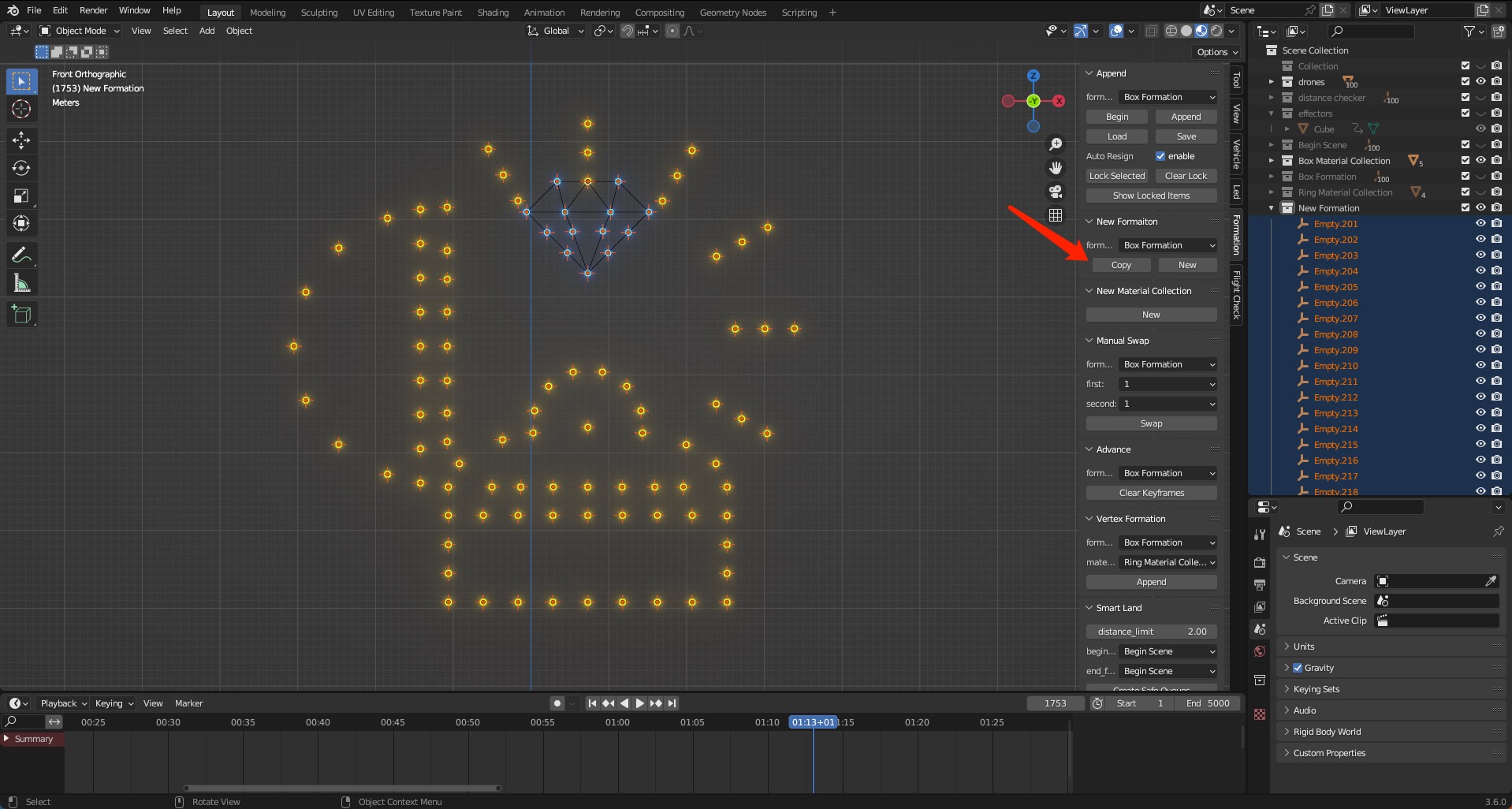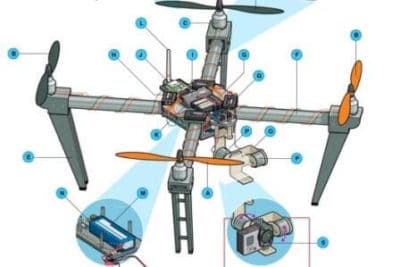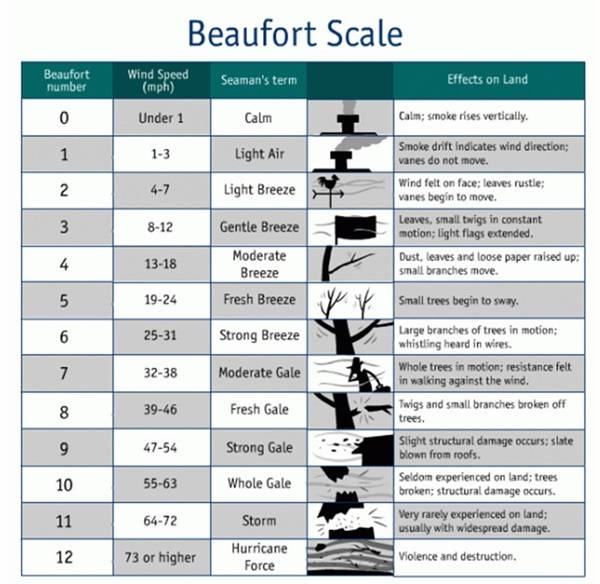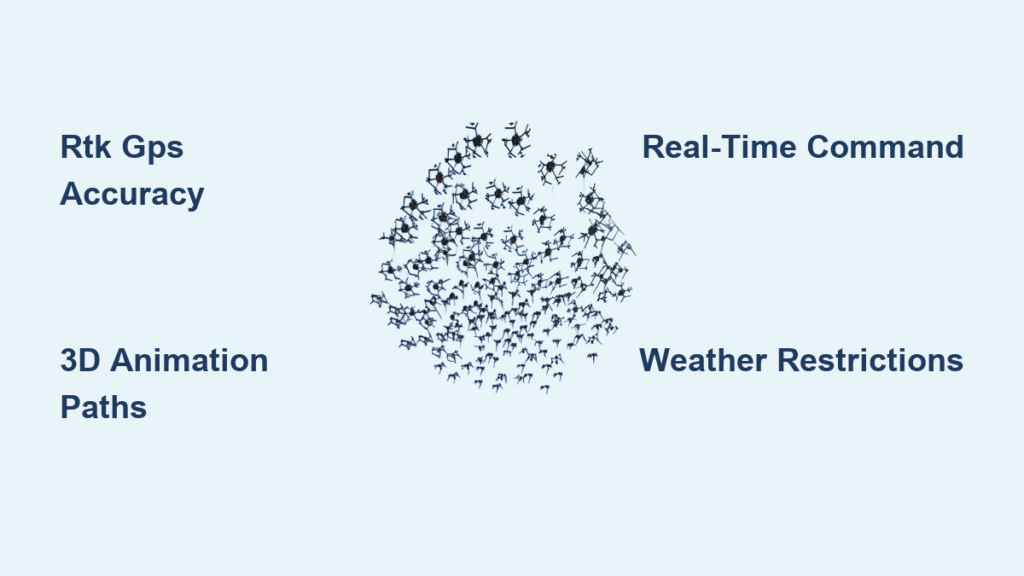Picture a night sky suddenly morphing into a glowing QR code that scans to your phone, then twisting into a 3D dragon breathing pixelated fire. These aren’t CGI illusions—they’re drone light shows, where fleets of tiny aircraft transform the heavens into a dynamic canvas. From Olympic ceremonies to luxury car launches in Shanghai, these spectacles have replaced fireworks as the go-to spectacle for brands and cities. But how do drone displays work when hundreds of machines must move in perfect sync without colliding? The answer lies in military-grade positioning tech, custom quadcopters, and algorithms that turn 3D animations into airborne art. In this guide, you’ll discover why centimeter GPS accuracy is non-negotiable, how weather can cancel a $500,000 show minutes before launch, and why drone displays are 100% reusable—unlike traditional fireworks.
Why Centimeter GPS (RTK) Is Non-Negotiable for Drone Displays
Without real-time kinematic (RTK) correction, your drone display would look like a blurry cloud—not a crisp logo. Standard GPS drifts by 3–5 meters, but RTK anchors drones to within 1–2 centimeters using ground-based correction signals. Here’s why this matters:
How RTK Prevents Sky-High Collisions
A single ground station broadcasts GPS corrections to every drone via 2.4/5.8 GHz signals. This happens 10 times per second, ensuring drones maintain 2–3 meter horizontal separation even during complex maneuvers like the Saudi National Day dragon formation. Skip RTK, and your 500-drone QR code becomes unreadable from the ground.
Indoor Shows Demand Alternative Navigation
When satellites can’t reach (like in an IKEA warehouse), crews deploy motion-capture cameras, UWB beacons, or IR lidar. These systems track drones against ceiling-mounted markers, but demand 2–3 meters of horizontal clearance per unit. Attempting tight formations in low-ceiling venues? You’ll get chaotic swarms—not the “glowing butterfly” effect clients pay for.
How 3D Animations Transform Into Drone Flight Paths

Your logo or dragon starts as a 3D file in Houdini or Blender—not a pilot’s joystick. Artists build frame-perfect sequences where every pixel maps to a drone’s position. Then, specialized software does the heavy lifting:
The 4-Step Path Generation Process
- Decomposition: Algorithms slice each animation frame into individual drone coordinates (X, Y, Z) and RGB color values.
- Collision Layering: The system checks for space-time overlaps—no two drones can occupy the same point within 0.5 seconds.
- Battery Optimization: Trajectories minimize sharp turns to conserve power (critical for 24-minute max flight times).
- Checksum Verification: Flight files undergo integrity checks before upload; one corrupted byte could strand drones mid-show.
Why Frame Rate Dictates Fleet Size
Simple logos need just 100 drones (one “pixel” per drone). But for high-resolution portraits like the GENESIS Shanghai reveal, you require 500+ units. Why? Each drone is a single point of light—too few, and curves appear jagged. Pro tip: For smooth animations, aim for 25+ drones per linear meter of sky imagery.
The Must-Have Hardware on Every Show Drone

Forget camera drones—light show quadcopters are purpose-built flying pixels. Here’s what’s inside each unit:
- High-Brightness RGB LEDs: Output varies by manufacturer, but every drone becomes one programmable light source. No dimming allowed; if one LED flickers, it ruins the entire formation.
- Proximity Sensors: Lidar or cameras detect neighbors within 5 meters, triggering micro-adjustments to avoid collisions during rapid direction changes.
- Pyro-Ready Variants: Some rigs (like Cyberdrone’s) carry spark dispensers for fire-trail effects—but these add weight, cutting flight time by 30%.
Why DJI Inspire Beats Consumer Drones
While custom frames dominate large shows, DJI Inspire and Intel Shooting Star quadcopters are staples for their payload capacity. Consumer drones? They lack the RTK antenna and 2.4 GHz transceiver needed for centimeter accuracy. One show producer learned this the hard way when off-the-shelf drones drifted 4 meters during a car launch—turning a sleek logo into a smudged mess.
One Ground Station Controls Thousands: Real-Time Command Systems
A single operator commands 3,281 drones simultaneously—not through magic, but military-grade communication protocols. Here’s the fail-safe architecture:
How Commands Beat Latency and Dropouts
Ground control stations (GCS) ping drones every 200–500 milliseconds. If a drone misses two heartbeats (due to wind or interference), it auto-hovers or returns home. Critical for safety? Absolutely. During a London New Year’s show, 12 drones lost signal in fog but landed safely—no audience risk.
Why Bandwidth Isn’t a Bottleneck
Custom radio protocols compress trajectory data into tiny packets. For perspective: A 500-drone show uses less bandwidth than a Zoom call. But push beyond 1,500 units? You’ll need dual GCS operators and backup frequencies to avoid spectrum saturation.
Why Weather Grounds Drone Displays (Wind, Rain, and Bird Risks)

No amount of tech can override Mother Nature. Drone displays cancel for reasons most audiences never consider:
The 10 m/s Wind Threshold
Sustained winds above 10 meters per second (22 mph) make drones fight for stability, draining batteries 40% faster. At Shanghai’s GENESIS launch, teams monitored anemometers constantly—any gust over limit would’ve aborted the record-breaking 3,281-drone show.
Hidden Bird Strike Dangers
Near migration routes, ecological assessments add weeks to planning. Drones flying into flocks can cause cascading collisions. One Dubai show delayed for 17 days waiting for safe bird activity windows—proving why you can’t “just wing it” with spontaneous reveals.
Drone Displays vs. Fireworks: The Environmental and Cost Reality
Forget tradition—drone displays dominate on sustainability and flexibility. This isn’t opinion; it’s data from global shows:
| Factor | Drone Displays | Traditional Fireworks |
|---|---|---|
| Reusability | 100% hardware reuse | Single-use shells |
| Noise Pollution | ~65 dB at 100 m (quiet hum) | 120–140 dB (ear-splitting) |
| Atmospheric Impact | Zero emissions | Perchlorate toxins, heavy metals |
| Customization | Pixel-level programmable | Limited to pre-made shapes |
Why Brands Choose Drones Despite Higher Upfront Costs
A 500-drone show costs 20% more than equivalent fireworks initially—but repeat bookings slash prices by 35%. Plus, you get social media gold: Viewers scan sky QR codes instantly, turning spectators into customers. Fireworks? They’re beautiful but unmeasurable.
Planning a Drone Show: Fleet Sizes, Budgets, and Permitting Timelines
Skipping these steps guarantees disaster. Here’s the real-world math:
Fleet Size vs. Image Complexity
- 100 drones: Only for simple logos (e.g., a circle or text). Complex shapes? They’ll look pixelated.
- 500+ drones: Required for detailed portraits or QR codes. The IKEA indoor reveal used 600 units to render their logo crisply at 30m altitude.
- 1,500+ drones: Where economies of scale kick in. Beyond this, costs plateau—but urban airspace permits double fees.
The 60-Day Regulatory Reality
Controlled airspace (like near airports) demands NOTAM filings 30–60 days ahead. One car brand lost $200K when they booked a city-center show with only 14 days’ notice—authorities denied permits. Always scout locations for flat takeoff grids (1m² per drone) and 50m audience exclusion zones.
Next-Gen Trends: Immersive 360° Shows and AI Choreography
The future isn’t just overhead—it’s all around you. Pioneering tech is already in testing:
Audience-Surround Formations
Imagine standing inside a glowing sphere of drones, not watching from below. Early trials in Dubai place viewers within the formation, requiring 360° choreography and advanced collision avoidance. One hiccup? Drones must now navigate vertically and horizontally around people.
AI That Adapts to Crowd Energy
Labs are testing systems where drones react to live music tempo or audience noise. At a recent festival, a swarm changed formation color based on decibel levels—creating unique shows each night. This isn’t sci-fi; it’s the next evolution of how drone displays work.
Drone displays prove the sky is no longer the limit—it’s the world’s most dynamic screen. By merging military-grade positioning, custom hardware, and artistic vision, these fleets turn abstract code into breathtaking public art. While weather and regulations keep shows from being spontaneous, the payoff is undeniable: reusable, silent, and infinitely customizable spectacles that engage audiences in ways fireworks never could. Whether you’re planning a product launch or simply marveling at a dragon in the night sky, remember: every pixel of light is a drone flying its precise path, proving that the future of entertainment is already overhead.



